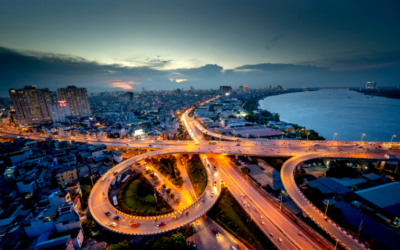Introduction: Visual effects (VFX) in cinema have undergone a remarkable evolution, transforming the way stories are told on the big screen. This exploration delves into the history and evolution of visual effects, showcasing the technological advancements that have brought magic and realism to modern filmmaking.
1. Early Beginnings:
- The origins of visual effects can be traced back to the early days of cinema, with pioneers like Georges Méliès experimenting with basic tricks and illusions.
- Techniques such as stop-motion animation and practical effects laid the foundation for the future of visual storytelling.
2. The Golden Age of Practical Effects:
- In the mid-20th century, practical effects, including miniatures, matte paintings, and puppetry, dominated the film industry.
- Classic films like “King Kong” (1933) and “2001: A Space Odyssey” (1968) showcased groundbreaking practical effects.
3. The Computer Age:
- The advent of computers in the late 20th century revolutionized visual effects. Computer-generated imagery (CGI) began to supplement and, in some cases, replace traditional practical effects.
- Films like “Jurassic Park” (1993) marked a watershed moment, showcasing the seamless integration of CGI with live-action footage.
4. Rise of Digital Effects Studios:
- Digital effects studios, such as Industrial Light & Magic (ILM) and Weta Digital, became powerhouses in the industry, pushing the boundaries of what was possible.
- The Matrix trilogy (1999-2003) demonstrated the capabilities of innovative bullet time and virtual cinematography.
5. Motion Capture and Performance Capture:
- The introduction of motion capture technology allowed filmmakers to capture the movements of actors and transpose them onto digital characters.
- Films like “Avatar” (2009) showcased the potential of performance capture, bringing entirely digital characters to life with realistic expressions and movements.
6. Realism and Integration:
- Visual effects became more seamlessly integrated into live-action scenes, achieving unprecedented levels of realism.
- Christopher Nolan’s “Inception” (2010) showcased gravity-defying scenes achieved through a combination of practical effects and CGI.
7. Marvel Cinematic Universe (MCU) and Beyond:
- The MCU has played a pivotal role in pushing the boundaries of visual effects, creating immersive worlds and larger-than-life characters.
- Advances in de-aging technology, seen in films like “The Irishman” (2019), have allowed actors to portray characters across different age ranges convincingly.
8. Virtual Production and Augmented Reality:
- Virtual production techniques, utilizing real-time rendering and augmented reality, are changing how filmmakers plan and execute scenes.
- “The Mandalorian” series (2019-present) employs virtual production to create stunning environments in real-time on set.
9. Challenges and Ethical Considerations:
- As visual effects capabilities expand, filmmakers face challenges in maintaining a balance between innovation and storytelling.
- Ethical considerations arise concerning the use of deepfake technology and the potential impact on the industry and society.
10. Future of Visual Effects:
- The future of visual effects holds promises of even more immersive experiences, with advancements in machine learning, AI, and real-time rendering.
- Emerging technologies, such as virtual reality and interactive storytelling, may further redefine the relationship between filmmakers and audiences.
Conclusion: The evolution of visual effects in cinema is a testament to the industry’s constant pursuit of pushing creative boundaries. From the early days of practical effects to the seamless integration of CGI and cutting-edge technologies, visual effects continue to play a pivotal role in shaping the magic of storytelling on the silver screen. As technology evolves, the future promises a new era of possibilities in creating cinematic wonders.




